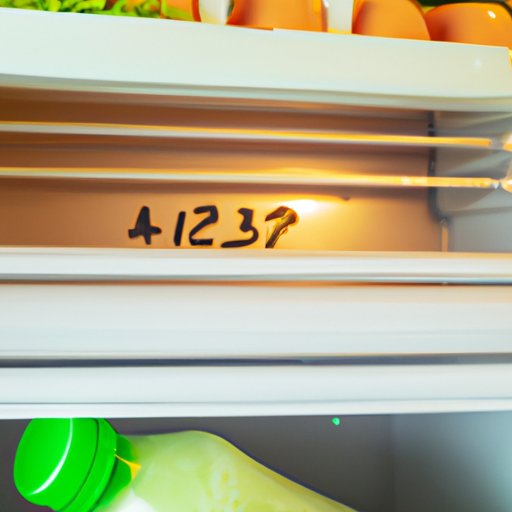Introduction
The temperature of your refrigerator has a direct impact on the safety of the food you store in it. Too high or too low a temperature can lead to food spoilage, contamination, and even health risks due to the growth of bacteria. Understanding the proper temperature for a refrigerator and how to monitor and adjust it is an important part of keeping your food safe and your appliances in good condition.

How Refrigerator Temperature Affects Food Safety
Why Temperature Matters for Food Safety: Keeping your refrigerator at the right temperature is essential for food safety. Bacteria grow quickly at temperatures between 40°F and 140°F. This is known as the “danger zone” because it is the most favorable environment for rapid bacterial growth. If food is stored in this temperature range for longer than two hours, it may become contaminated with harmful bacteria such as salmonella, E. coli, and listeria.
Types of Bacteria that Grow at Different Temperatures: Different types of bacteria thrive at different temperatures. For example, salmonella grows best at temperatures between 68°F and 77°F, while listeria grows best at temperatures between 33°F and 41°F. If the temperature in your refrigerator is not cold enough, these bacteria may be able to grow and contaminate your food.

The Ideal Temperature for Refrigerators
Recommended Temperature: The ideal temperature for a refrigerator is between 34°F and 40°F. This temperature range will ensure that all food stored in the refrigerator is kept below the danger zone, making it safe to consume. Additionally, this temperature range is energy efficient, so you won’t have to worry about your electricity bill skyrocketing.
What Happens if the Temperature is Too High or Too Low: If the temperature in your refrigerator is too high, food will spoil more quickly and bacteria will be able to grow. If the temperature is too low, food can freeze and become inedible. In either case, you may end up having to throw out the food and replace it, wasting both money and time.
Why It’s Important to Monitor Refrigerator Temperature
Health Risks Associated with Improper Temperature: As mentioned previously, storing food in the danger zone for too long can result in food contamination and potential health risks. Eating contaminated food can cause food poisoning, which can lead to serious illnesses and even death in some cases. Therefore, it is important to monitor the temperature of your refrigerator regularly and make sure it is set to the proper level.
Potential Damage to Food and Appliances: Not only can improper refrigerator temperature lead to food contamination, it can also cause damage to your food and appliances. If the temperature is too high, food may spoil faster and ice cream may melt. If the temperature is too low, food may freeze and become inedible. Additionally, the refrigerator itself may suffer damage if the temperature is too high or too low.
How to Set the Right Temperature for Your Refrigerator
Steps for Setting the Temperature: Most refrigerators come with a built-in thermometer. To set the temperature, locate the thermostat dial inside the refrigerator and adjust it to the desired temperature. You may also need to adjust the temperature in the freezer compartment. Once you’ve adjusted the temperature, wait 24 hours before checking the thermometer to make sure the temperature has stabilized.
Tips for Keeping the Temperature Stable: To ensure that the temperature remains stable, make sure to keep the door closed as much as possible. Additionally, don’t overload the refrigerator with too many items, as this can cause the temperature to fluctuate. Finally, avoid placing hot food directly into the refrigerator, as this can cause the temperature to rise.

Common Mistakes People Make When Setting Refrigerator Temperature
Overlooking the Manufacturer’s Recommendations: Many people forget to check the manufacturer’s recommendations for the ideal temperature setting for their refrigerator. It’s important to check these recommendations in order to ensure that you’re setting the right temperature for your specific model.
Not Checking the Temperature Regularly: It’s also important to check the temperature of your refrigerator regularly. Even if you set the temperature correctly initially, the temperature may change over time and it’s important to make sure it stays within the ideal range.
Conclusion
Setting the temperature of your refrigerator correctly is essential for food safety and preserving the life of your food and appliances. The ideal temperature for a refrigerator is between 34°F and 40°F. To ensure that the temperature is kept at the optimal level, make sure to check the manufacturer’s recommendations, adjust the thermostat accordingly, and check the temperature regularly. Following these tips will help you keep your food safe and your refrigerator in good working condition.


